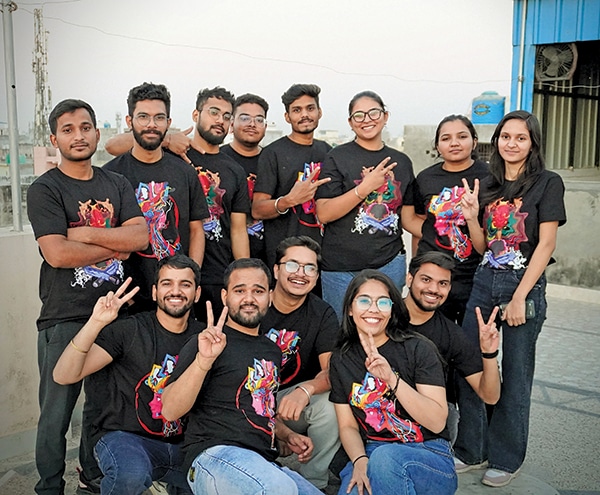From failure to global impact—this startup is making neuroscience accessible with open-source, low-cost bioamps. How did they get there?
In 2016, Deepak Khatri, inspired by a tech talk by Greg Gage, set out to build his own biopotential amplifier. He gathered components worth ₹1000, but the first attempt failed. Determined to learn, he broke down the problem, studied each element, and eventually built a working circuit for under ₹100.

By 2018, with guidance from his professor, he learned to design and manufacture PCBs. That year, he developed his first proper PCB for a biopotential amplifier (BioAmp) and launched a store on Tindie called Upside Down Labs. The name reflected his perpetually messy workspace and a nod to Stranger Things.
By December 2020, he was designing one PCB daily, refining the BioAmp EXG Pill—a compact, open-source biosignal sensor. Initially developed for EMG, he soon realised it could also capture ECG and EEG, outperforming existing solutions.
Deepak’s college friends, Dikshant Dahiya and Bhawna Sehgal, joined him as his interest grew. They formalised Upside Down Labs as an LLP and launched a crowdfunding campaign, raising over $13,000—eventually surpassing $30,000. To date, they have sold BioAmp EXG Pills worth over $100,000.
Today, the startup provides neuroscience kits for students and researchers and collaborates with universities and industries. It currently offers over seven different sensors and multiple accessories, all catering to bio-physiological and biopotential signals.
The company claims to be India’s first and only one to design and manufacture DIY neuroscience kits. “The uniqueness of these kits lies in their fully open source nature—every design file is available for anyone to study, modify, or build upon. This makes them particularly valuable for students developing their own biosensors,” Deepak explains.
Discussing the electronics involved, Deepak says, “The electronics in each sensor are designed from scratch. Most use a quad-operational amplifier. The first stage is a custom instrumentation amplifier that processes the signal, followed by another amplifier for band-pass filtering, and a fourth amplifier that creates the reference voltage power supply. This setup forms the core of most BioAmp designs. An earlier version, BioAmp v1.5, had a different design, but all current models follow this structure: two amplifiers for signal processing, one for filtering, and one for power supply.”






